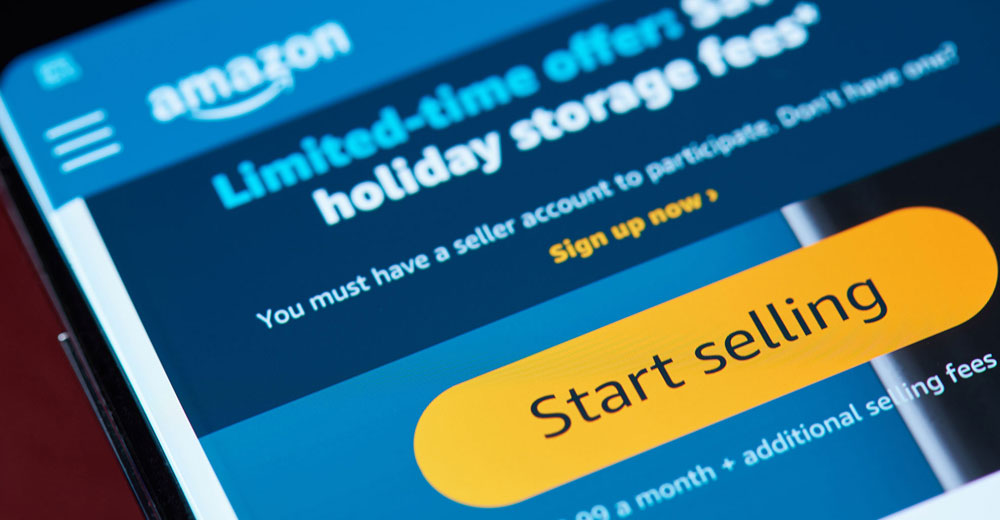Amazon continues to face intensified scrutiny from antitrust lawsuits to allegations of inhumane working conditions. Yet despite criticism, consumers continue to feed the massive digital marketplace that allegedly is filled with shady practices. According to e-commerce veteran and Amazon entrepreneur Jason Boyce, the time is now for consumers to wake up to the cost of convenience.
“What’s the real cost of getting everything delivered to your door? Small businesses and third-party sellers are getting killed,” said Boyce, CEO and founder of Avenue7Media.” As consumers in a free country, we have to ask ourselves whether one company with the power of Amazon is good for American consumers and small businesses.”
Boyce, an entrepreneur and innovator, started selling on Amazon in 2002 as a direct-to-consumer retailer. The following year he transitioned to a third-party Amazon merchant.
He continued selling on Amazon for 17 years. Along the way, Boyce developed a seven-step method that helped him become a Top 200 Amazon Seller and a Top 1,000 E-Commerce Seller, according to Digital Commerce 360.
The E-Commerce Times discussed with Boyce his experiences as an Amazon entrepreneur. The conversation covered why consumers and sellers do not always get the upper hand.
Despite his success as a top Amazon seller, Boyce focused on the reasons behind his business mantra that “Amazon is not your friend.”
“That is absolutely the truth. There is a hidden cost that consumers pay for the convenience of shopping on Amazon,” he told the E-Commerce Times.
Different players compete in the Amazon game. There are investors or sellers, workers and drivers, and consumers.
No Level Playing Field
In the early days, a lot of small mom-and-pop e-tailers started selling on Amazon, and life was good. Boyce recalled these small merchants quickly started getting more sales on Amazon than they were getting through their neighborhood storefront.
A friend of his closed down his retail location and only sold on Amazon. Small town retailers were pretty pleased with what they were able to do. Many of them were resellers.
“Of course, that game was short-lived because the more competition comes on selling the same product,” he said. “The only way to win the buy box is to lower the price.”
So the selling game transitioned to offering private-label merchandise. Sellers really had to create their own brand names to have success so that you did not have to fight in the buy box.
“For small U.S. sellers especially, it was a really good game for a long time. Then things changed,” observed Boyce.
One of those changes was the use of Amazon Basics. Many sellers viewed that as being a big negative to selling on Amazon. They felt that the lower price and required private label hurt their sales capacity. But it is still a very small percentage of their sales, he said.
The bigger problem was that Amazon rolled out the red carpet for the factories in China. Many of those factories were sourcing to these small mom-and-pop sellers in the United States.
“So what Amazon did is undercut the U.S. sellers by going straight to their factories,” Boyce explained. Essentially, Amazon invited the factory products to cut out the middleman by letting China-based products sell directly on Amazon.com.
Amazon made it easier for the China-based merchants to ship goods directly into the Fulfillment by Amazon (FBA) program. FBA enables vendors to store their products in Amazon’s fulfillment centers, where Amazon workers pick, pack, ship, and provide customer service.
“They made some of these factories pay a little bit up front to get special services from Amazon that were frankly never available to the U.S. seller because they saw it as an opportunity to maintain lower prices than the U.S. seller,” according to Boyce.
Section 230 Protection
For domestic sellers, vendors who fail to do proper safety testing for a listed product that hurts an Amazon shopper can be sued, according to Boyce. Amazon is not liable except in a few states because Section 230 of the Communications Decency Act (CDA) protects them.
On the other hand, China-based sellers can provide an untested product because Amazon does not require it. So good luck trying to find the factory in China to sue them.
“That just is not going to happen,” Boyce said. “U.S. sellers have a very high incentive to make sure that what they sell was safe and secure on Amazon. China-based sellers have no such incentive.”
Several court cases in California, Ohio and Pennsylvania upheld the cannot sue Amazon standard, he noted.
Waiting for Rule Changes
Proposed legislation to better regulate such situations involving foreign vendors selling on U.S.-based digital marketplaces worked its way through Congress in previous years. Amazon, which spends upwards of $20 million a year in lobbyists, gutted the requirement for sellers doing more than a certain number of orders, according to Boyce. Amazon did not want that requirement to happen.
“Legislation was on the table to fix that problem. But at least this was a step in the right direction, and Amazon put the kibosh on it,” he said.
New proposed legislation to regulate big tech companies like Amazon is once again working through the Congressional maze. Boyce sees this as a golden opportunity to reign in on what should be viewed as controlling monopolies.
In early June this year, five bills in the House of Representatives started working their way through Congress trying to address this issue. One of them specifically calls for the breakup of big tech companies.
“If you are a platform, you should not be allowed to sell your products on that platform. You should be a neutral platform,” noted Boyce. “The old rules developed in the 1920s and fine-tuned in the 1980s don’t apply to today’s marketplaces. Legislators need to modernize the rules for the digital age so that they pay attention to how these tech companies under existing laws are suppressing competition.”
Unfair Marketing Restrictions
Amazon is so large that it now has the ability to make sellers raise their price on other markets such as Walmart to match the price on Amazon, asserts Boyce. He sees use cases where sellers remove their products from Walmart’s website, which he describes as the largest U.S.-based retailer globally, for fear of losing the number of sales they can get on Amazon.
“If that’s not monopoly power, I don’t know what it is,” he said. “I think it is in the best interest for not just the online marketplace but the market in general that competition can thrive and innovate.”
Walmart has a lower cost structure for sellers. But sellers who drive large listing volumes on Amazon are fearful of losing that revenue. That is a problem, according to Boyce. Walmart and other online marketplaces should be able to compete even if they cannot match Amazon with its logistics network, speed of delivery, and its selection.
“If they can come in and offer competing products at a lower price because their cost structure is lower, they should be able to do that,” he said.
But the way Amazon is set up, that competition is not possible unless that seller on that competing marketplace is not also selling on Amazon. Otherwise, they are giving up half of the market available, he advised.
Boyce calls what Amazon does digital price-fixing. It involves secret strategies that the retail platform uses to control prices and restrict the success of third-party sellers.
“When I first signed my first contract with Amazon, they put it legally in the contract that you cannot sell products listed on Amazon lower anywhere else. Then somewhere around 2016 they pulled it out of the contract,” he said.
How It Works
Now Boyce can list his products at lower prices. That turns out to be not so great thanks to the repercussions.
He quickly found out was that Amazon applied something called Buy Box suppression. For example, a product that his company sold on Amazon at a certain price was also offered on all the other marketplaces. He started to lower his prices on those other marketplaces compared to Amazon because his cost structure was lower elsewhere.
But then his Amazon sales tanked by 30 percent after the first week. Amazon removed the Add to Cart and Buy Now buttons. Instead, his product pages displayed buttons that said See All Buying Options grayed out. Clicking that button took shoppers to another screen. Then he discovered that he could not drive traffic to his top-selling listings anymore.
“Amazon cuts off your ability to drive traffic. If you don’t drive traffic, you don’t get clicks. No clicks mean you don’t get sales. That’s how Amazon does it,” said Boyce.
Amazon’s response to his inquiries was that he was not competitive to listings on other websites, so he needed to adjust, according to Boyce.
Bottom Line: Raise Prices or Walk Away
Doing business on Amazon forces sellers into a losing proposition, noted Boyce. In his case, he either had to lower his price on Amazon, which his higher cost structure did not justify, or raise his price on Walmart’s marketplace.
“The bottom line is I can’t lower my price and make money anymore because it’s too expensive to do business on Amazon. The cost per click is more on Amazon,” he concluded.























































Social Media
See all Social Media